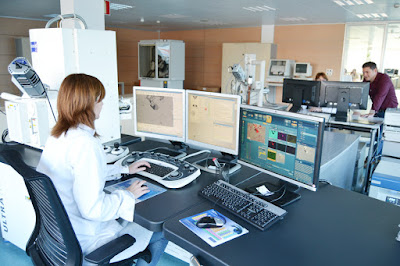-
Tags
Market demands, in terms of performance and cost, keep pushing the development of new metallic alloys with optimised characteristics that can respond to more specific and demanding applications. The development process of these new alloys is highly complex and technical, and it involves a deep knowledge of metallurgy and of the properties and the behaviour of metallic materials, as well as mastering advanced modelling techniques and having the capacity to design and perform tests that can rapidly evaluate their performance.
For sectors and applications where equipment and components are exposed to aggressive environments, with highly corrosive conditions and high temperatures, like energy production or Oil&Gas sectors, creating new alloys that are more resistant to oxidation and creep (plastic deformation that materials can suffer when exposed to high temperatures for long periods, even when the tension or the effort applied is smaller that its fluency resistance coefficient) is a key strategy to improve their efficiency and durability.
AZTERLAN Metallurgy Research Centre has a long experience developing alloys with improved properties. Part of its research activity is focused in the development of new alloys (ferrous and non-ferrous) and superalloys, directed to different areas of application and coordinated by the Corrosion and Materials Protection research team
“Apart from improving the properties and functional behaviour of already known alloys, the new materials developed must be cost-competitive and manufacturable for the required industrial application.”
Process to develop a metallic alloy more resistant to creep and to oxidation
When approaching a specific challenge like this one, the research team has a clear starting point: the metallic alloys already being applied by the industry and their expert knowledge about the properties of different metals and the transformation processes of metallic components
The methodology to develop a new alloy consists of the following steps:
- Firstly, standardised alloys of reference are selected, and their behaviour is analysed to identify which elements have a major incidence in front of these phenomena. These alloys are tested according to standardised tests, like those performed under standards ASTM E139 (creep) and ISO 21608 (oxidation), or to tailored advanced characterisation tests. The aim is to reveal in a rapid an efficient way how these alloys behave when it comes to the different functional requirements.
- Once the elements of main influence regarding the pursued qualities are identified (resistance to creep and to corrosion), advanced thermodynamic and thermochemical simulation processes are performed. These simulations provide a theoretical prediction of the diffusion and precipitation of chemical elements, compounds, and phases, which usually depend on process parameters and time. That way much more accurate adjustments can be performed in the chemical composition and, if needed, posterior heat treatments. Modelling processes are a key tool for a theoretical and quite precise and agile approach to new alloys, avoiding long and expensive experimental processes.
- The last phase consists of manufacturing prototype alloys that will, finally, undergo the same tests mentioned (resistance to creep and to corrosion) to perform a comparative study and demonstrate that, effectively, the new alloy improves the pursued properties.



